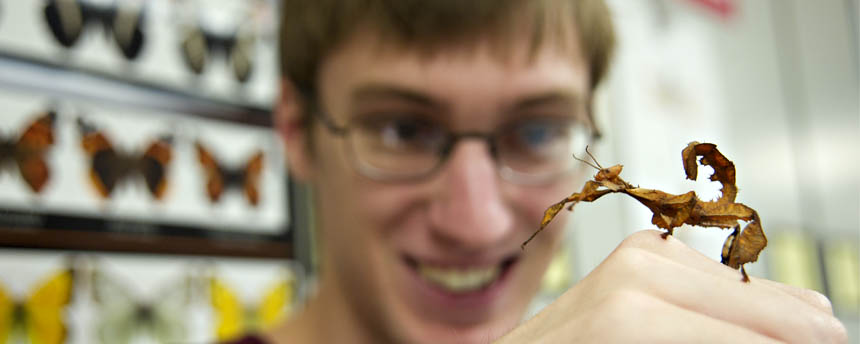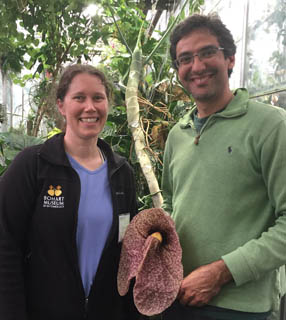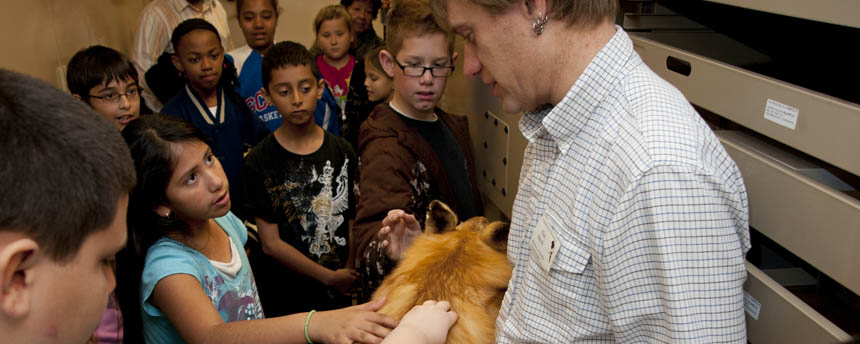Earth is home to hundreds of thousands of plant species. It’s also home to about 5,000 species of mammals and 10,000 species of birds. Nearly 30,000 fish species have been described by science, and nearly a million species of insects. The list goes on, which is to say that life on our planet is abundant. There is a whole lot out there for scientists to study.
Consequently, there are many laboratories and departments across the UC Davis campus dedicated to exploring biodiversity and natural history, but they all function independent of one another and they’re not always open to the public. On Biodiversity Museum Day, however, nearly a dozen of them swing their doors open in unison, inviting the science-loving masses in for the closest possible look.
The 6th Annual Biodiversity Museum Day takes place this Saturday, February 18, from 9am to 4pm. Many of the campus’ labs, gardens, museums and more are participating – everything from insects, fish and raptors to nematodes, plants and yeast. All in the same day.

What Do You Want to Know?
“This event is borne out of purely and simply wanting to share what we do,” said co-founder Tabatha Yang, Education and Outreach Coordinator for the Bohart Museum of Entomology. “People get to talk to the scientists and curators of the collections – people who have dedicated their lives to understanding their subject.”

Yang helped organize the original event alongside Dr. Ernesto Sandoval, Curator for the UC Davis Botanical Conservatory. Only four units participated in that inaugural event. Six years later they’re up to 11, with increasing interest from the public, too.
“People come to understand how these organisms work, and how we use them here on campus," Sandoval said. "They end up staying longer than they expected.”
In addition to the Botanical Conservatory (plants) and Bohart Museum (bugs), the day will feature the Museum of Wildlife & Fish Biology, California Raptor Center, Paleontology Collection, Arboretum & Public Garden, Phfaff Yeast Culture Collection, Viticulture & Enology Culture Collection, Nematode Collection, Center for Plant Diversity Herbarium, Anthropology Museum and the Häagen-Dazs Honey Bee Haven.

Bringing Science into Everyday Life
The growth has been largely organic, with no central group organizing the event beyond the folks Yang and Sandoval have pulled together. It’s a grassroots effort, but the event has grown from attracting hundreds in its first year, up around 1,000 now.
“This is a place where scientific connections are made,” said Sandoval. “We’re serving one of the three main missions of the university: outreach.”
For lovers of science and biodiversity, the day represents a great opportunity, not only to learn, but also to potentially map out one’s future.

“You might come because you’re interested in plants,” said Yang. “But it’s a great time to just pop over to anthropology, too. You could intern here or do a senior thesis there.” If your college years are behind you, you can ask about ways to get involved in a citizen science project.
View a map of participating locations.
Find your way to the off-campus California Raptor Center and the Häagen-Dazs Honey Bee Haven.
Justin Cox is content marketing manager for the UC Davis One Health Institute and the Karen C. Drayer Wildlife Health Center.